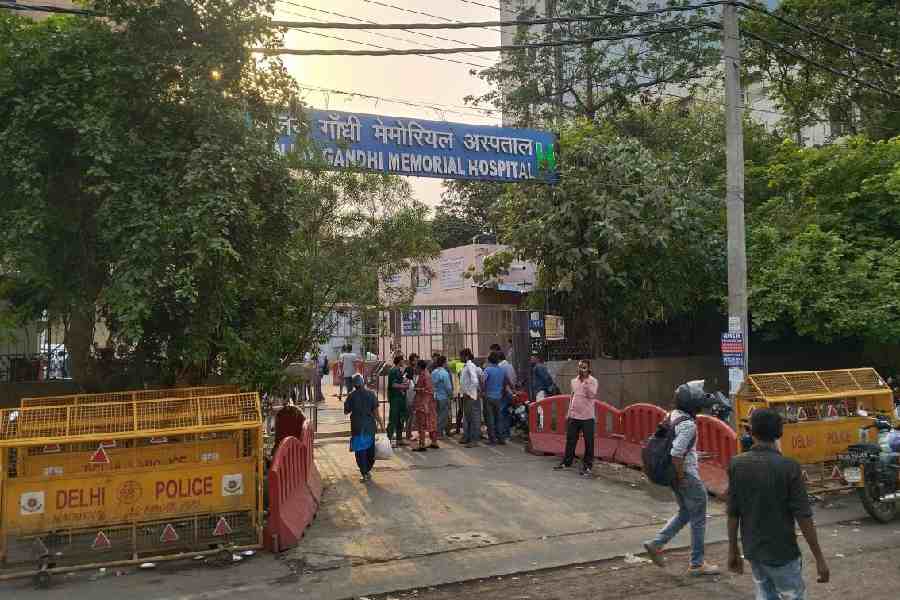The two approaches to the Dhakuria flyover have become undulating making it difficult for vehicles to negotiate the gradient, engineers who conducted a load test on the south Calcutta structure recently have concluded.
The flyover has otherwise been found to be structurally stable.
To make the ride smoother on both approaches to the flyover — built in 1963 — structural experts and advisers to the state government on bridge safety have decided to first reduce the gradient. Once that is done, the undulating surface on the approaches will be repaired.
“The structure is quite old and it would be a challenge to achieve our objective to make the ride smoother on the two approaches. But we will have to find a way,” said a member of the expert committee set up by the state government to look into the health of bridges and flyovers maintained by the state’s urban development department.
“There will be three clear benefits once we achieve our goal — vehicular emission will be reduced, operating cost of maintaining vehicles will come down, and wear and tear of tyres will be minimised.”
Once the two approaches are repaired, the committee may apply the technique to other flyovers that suffer from the same problem.
The pier-less, 380m-long bridge was shut down for two days in July because engineers wanted to test it’s load-bearing capacity.
The Dhakuria flyover stands on inclining concrete walls filled with sand or earth. Railway tracks run below an 80m-long section of the bridge.
Structural engineers have said the technology used to build the flyover had become dated. “There are no piers holding the flyover. It has concrete walls from bottom to top with soil in the middle. The paved road was built above the soil. This technique has become dated,” said an engineer.
A few years back an inspection had revealed that rats had burrowed large holes underneath the flyover. In June 2013, a portion of the walkway on the flyover had collapsed and created a 1.5ft gap, wide enough to raise doubts about the stability of the 57-year-old structure.
“There is nothing much to worry about the main structure. There are certain needs for maintenance and it will be carried out,” said an engineer of the urban development department.










